1. Blue
Color blue is coldest of all colors and relatively rare in living nature. It is color of water or sky, both really being transparent or translucent, somehow out of this world. Man with blue beard doesn't give feeling of a human being. Role of mass murderer suits him well. Blue is also color of authority, often used as the color of police uniforms and similar representatives.
It is color of trust and loyalty, both being tested as the focus of the story. When the trust is betrayed, it is hurt, what can explain Bluebeard's reactions. On the negative side, blue can also represent coldness and lack of emotions, both characteristics of the Bluebeard.
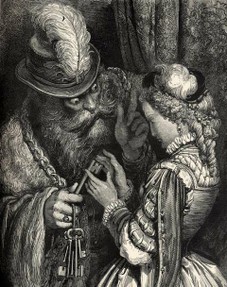 2. Beard
2. Beard
Beard is traditional sign of age, maturity and wisdom. On the other hand it is related to barbarism, magic and weirdness. Bluebeard posses all of these characteristics and more, all further emphasized with unnatural color. A beard can reveal one's status, but also hide his identity, again all true in this case. One of the primal functions of the beard in human culture is to distinguish men from women and if we think a bit, the story of Bluebeard is actually a very polarized contrast between both genders.
All hair is associated with magical powers, what is seen in literature as well. Typical examples are Rapunzel in fairy tales and Samson in Bible. In our case the beard is used only at the beginning, when the title character is introduced, but not later, when his facial hair could probably play more important role. However illustrators used it to full potential.
3. Keys
A key is one of the strongest symbols in literature. It can represent many things. Power is only one of them. Key is definitely important tool and sign of maturity. Kids don't have keys. They don't have property to protect either. And they don't have secrets which need to be locked up!
Keys to the city are handed only to the most people with very special status. Actually every single key can contribute to display of one's status. More keys you have, more important you probably are. There are keys to mysteries and if we are lucky enough (key in several cultures symbolizes good luck as well), we can have a key to one's heart.
Bluebeard used his keys as ultimate test of his wife. Can he trust her? Of course not, in environments with high levels of trust there is no need to lock the doors anyways!
We can't neglect Freud's view on keys either. To him a key is obvious phallic symbol. It represents knowledge by which a girl is distinguished from a woman. Can she handle it? According to Bluebeard, obviously not.


 2. Beard
2. Beard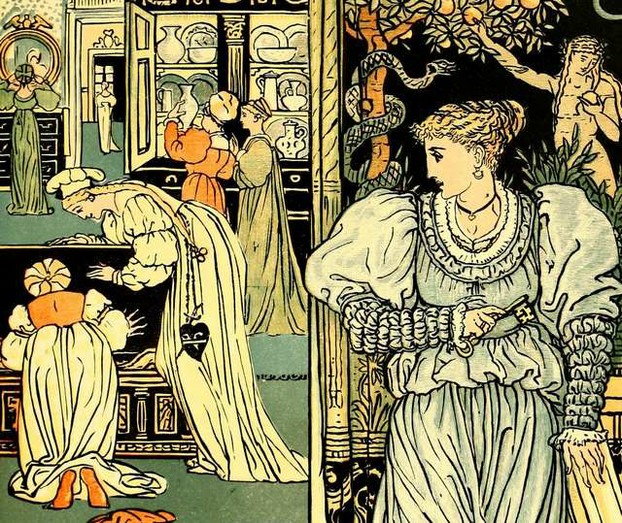
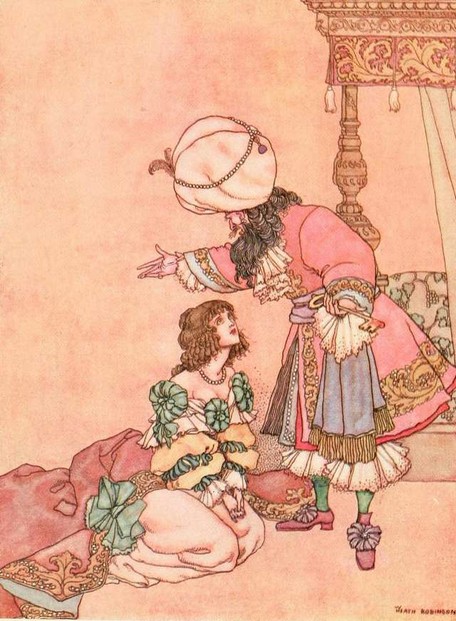
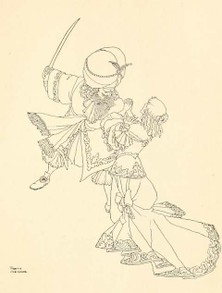

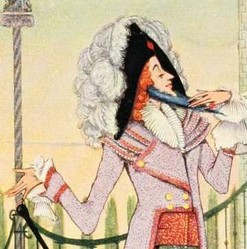

 Vintage Postcard Artists with 10 Examples of Easter Cardson 02/21/2025
Vintage Postcard Artists with 10 Examples of Easter Cardson 02/21/2025
 Valentine's Symbolson 01/23/2025
Valentine's Symbolson 01/23/2025
 Thanksgiving Symbolson 11/12/2024
Thanksgiving Symbolson 11/12/2024
 Famous Witches in Literary Historyon 10/06/2024
Famous Witches in Literary Historyon 10/06/2024
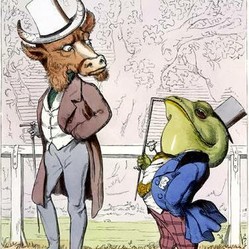
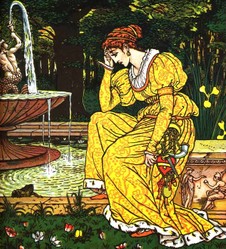
Would you like to add another symbol or hidden meaning from the story of Bluebeard?
No, DerdriuMarriner, I don't have any knowledge about that. Christianity, in general, doesn't take fairy tales too seriously. They are treated as 'just stories for kids' in most cases. Symbolism is more deeply explored by psychologists.
Blue and red come off rather negatively in fairy tales if Bluebeard's story is any indication.
Blue displays coldness even as red divulges passion and rage.
And yet blue and red link with Our Lady Mary in pre-modern European art.
Would there have been Christian reactions to such cold blue, passionate red associations in fairy tales such as Bluebeard's story?
When we realize the power of symbols, a literature opens completely new view on life. Thanks for stopping by, WriterArtist!
Though I don't recall coming across Bluebeard in fairy tales, the symbols of hidden doors, mirrors and keys occur repeatedly in many fairy tales. It is interesting to note that all these objects awaken curiosity. I also liked anecdotes that contain riddles, it was fun reading stories where Prince Charming would unlock the puzzles with the help of symbols or clues. In nutshell - the interpretation of blue and beard symbols is quite interesting, it makes the story thrilling.
@frankbeswick: About the glass slippers ... There is kind of myth about wrong translation: 'pantoufle de vair' (fur slipper, if I remember correctly - squirrel fur) was misunderstood as 'pantoufle de verre' (glass slipper). While it is clear Perrault wrote 'verre' (glass) in his first edition, many still believe there was an error (he wrote wrongly - hard to believe, he was a master of words, or at later versions - meaning there should be at least one version which is at the moment not known to the public). There is ground for their belief in older versions, where Cinderella's slippers were really made of fur and of course in reality, where we obviously use more fur than glass in footwear industry. I hope we didn't stray too far from the subject (Bluebeard). By the way, I have an article about Cinderella, too:)
I could not find any reference to glass slippers, but you are right that there may be a translation issue, as the Gaelic word glas can mean green.
You are right, Thamisgith, Bluebeard is not very common on the shelves anymore. But less than hundred years ago it was actually sold as kind of good night literature! Different times, huh?
Thanks for stopping by!
Thanks, frankbeswick for your thoughts on color blue. There may be pretty solid ground for this, although I can't say for sure when this color of the beard appeared for the first time. Before Perrault wrote the tale down, it was already known in Italy and few parts of Scandinavia.
If he was the first with blue color, this may be because of older story in Gaelic language, but I would still be very cautious. Explanations behind 'his' glass slippers which should be made of fur, proved there may be more than translation behind a specific word.
Thanks again, I appreciate it!
Interesting article. You don't hear this one very much these days.
You have stirred some thoughts in me about the age of the tale and the language in it. I suspect that the colour blue is not only about coldness, but hints at a more ancient language in which the tale was once told.As we have it, the tale is French, but it is a peculiarity of one or two Celtic languages, that they use the word blue to denote black when speaking of human complexion. Gaelic, for example, a Celtic tongue, calls a black man "fear gorm" [blue man] rather than "fear dubh" dubh being the word for black [pronounced far gorum and far doov.] Note that before French was spoken in France there was Gallic, a Celtic language related to Gaelic, Welsh and Cornish. Oppenheimer, who has researched relationships between Western European peoples, suggests that Gallic was akin to Gaelic [the language of Ireland], though he cannot be sure. Thus in ancient Gallic blue might have denoted black when hair and skin were spoken of, and this usage might have lingered in the fairy tale.